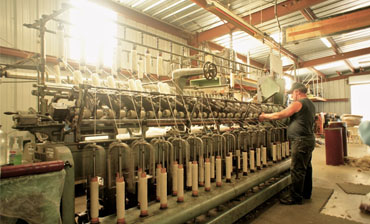Cashmere yarn production process
Thursday, June 28, 2018 1:47:59 AM America/Los_Angeles
Cashmere yarns are generally made from a variety of staple fibers of varying lengths by splicing, as well as from long continuous filaments. In the spinning process, it is first necessary to remove the miscellaneous mash, that is, to perform preliminary processing on the raw material, which is also referred to as preparation of the spinning raw material. Different kinds of raw materials, different types and properties of impurities, processing methods and art is also different.
The processing of disorganized and transversely-connected fibers in a longitudinal order, and with a certain requirement for smooth cashmere yarns, requires that the bulk fibers be turned into a single fiber state, and the existence of horizontal cross-links between the fiber materials is eliminated, and a firm end-to-end connection is established. The vertical link. The former is called the release of fibers and the latter is called the collection of fibers.
Loosening of fibers completely removes the lateral connection between fibers and fibers. However, fiber damage must be minimized.
The combing function of the combing machine is to use a more detailed combing method in which the two ends of the comb are held separately. Combing machine processing can eliminate short fibers and fine miscellaneous worms below a certain length, making the fibers more parallel and straight. Chemical fiber is not processed by the combing machine because it is neat in length, less in contaminants, and has a straight parallel state.





